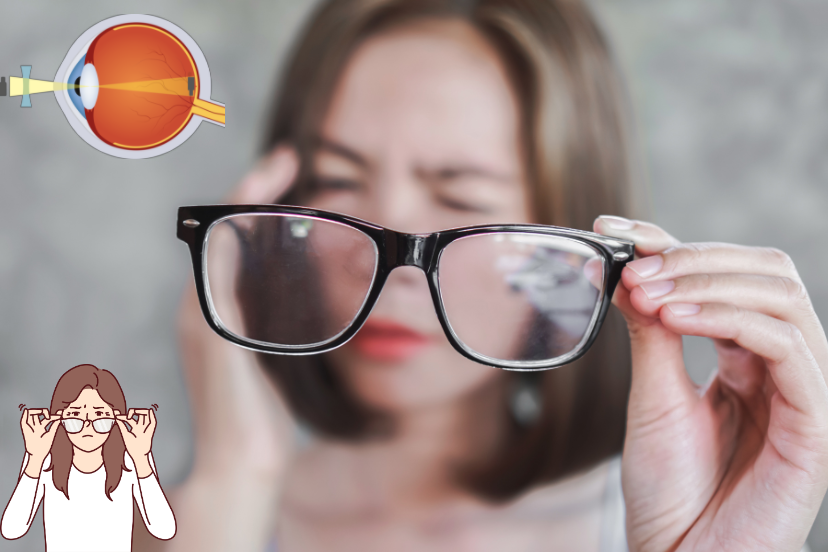Loss Of Peripheral Vision
Understanding The Causes, Symptoms And Solutions
Loss of peripheral vision, also known as tunnel vision, can significantly impact an individual’s quality of life. As a vision health researcher, I want to shed light on this issue, provide helpful suggestions, and explain the reasons behind these suggestions.
This article will explore the causes of peripheral vision loss, its symptoms, available treatments, lifestyle changes that can improve peripheral vision, preventive measures, and coping strategies.
Introduction
Loss of peripheral vision refers to the partial or complete reduction in the ability to see objects and movements outside the direct line of sight. It is a condition that affects the outer edges of our visual field, leading to a narrowed visual perspective. Understanding the causes and implications of peripheral vision loss is crucial for managing this condition effectively.
What Is Peripheral Vision?
Peripheral vision is the ability to see objects and movements outside the central line of sight. It allows us to be aware of our surroundings and perceive objects without directly looking at them. Our eyes work together to provide a comprehensive visual field, which includes both central and peripheral vision.
Causes Of Peripheral Vision Loss
Several factors can contribute to the loss of peripheral vision. It is essential to identify the underlying cause to determine the appropriate course of action. The following are some common causes:
Eye Diseases
Eye conditions such as glaucoma, retinitis pigmentosa, and optic neuropathy can lead to tunnel vision. These diseases affect the optic nerve or the retina, impairing the transmission of visual signals to the brain.
Neurological Conditions
Certain neurological conditions like stroke, brain tumors, and multiple sclerosis can affect the visual pathways, causing tunnel vision. These conditions disrupt the communication between the eyes and the brain.
Medications And Treatments
Some medications, such as certain types of antipsychotics and antihypertensives, can have side effects that affect vision, including peripheral vision. Additionally, treatments like radiation therapy can damage the optic nerves or surrounding tissues.
Trauma Or Injury
Head injuries, concussions, or trauma to the eyes can result in tunnel vision. The impact can damage the optic nerves or affect the visual processing areas in the brain.
Symptoms Of Peripheral Vision Loss
Recognizing the symptoms of tunnel vision is crucial for early detection and prompt intervention.
The following signs may indicate a decrease in peripheral vision:
- Difficulty navigating crowded spaces or bumping into objects
- Reduced awareness of objects or people on the sides
- Tunnel-like vision or a feeling of looking through a tube
- Challenges with peripheral activities such as driving or sports
- Increased sensitivity to glare or changes in lighting conditions
If you experience any of these symptoms, it is essential to consult an eye care professional for a comprehensive examination.
Diagnosing Peripheral Vision Loss
Diagnosing peripheral vision loss involves a series of tests conducted by an optometrist or ophthalmologist. These tests may include:
- Visual field test: This assesses the extent of peripheral vision loss by measuring an individual’s ability to see objects in different areas of their visual field.
- Comprehensive eye exam: This evaluates the eyes’ overall health, including checking for any underlying conditions or abnormalities.
- Imaging tests: These tests, such as optical coherence tomography (OCT) or magnetic resonance imaging (MRI), can provide detailed images of the eyes and brain to identify potential causes of vision loss.
Treatment Options For Peripheral Vision Loss
While complete restoration of peripheral vision may not always be possible, various treatment options can help manage and improve the condition. Treatment choice depends on the underlying cause and severity of the tunnel vision. Here are some common treatment options:
Corrective Eyewear
In cases where refractive errors or vision abnormalities contribute to peripheral vision loss, wearing prescription eyeglasses or contact lenses can help optimize visual acuity.
Medications And Surgeries
For conditions like glaucoma or optic neuropathy, medications or surgical interventions may be recommended to slow down the progression of vision loss or alleviate symptoms.
Vision Rehabilitation
Vision rehabilitation programs, which include visual exercises, adaptive strategies, and assistive devices, can enhance the effective use of remaining vision and improve daily functioning.
Lifestyle Changes To Improve Peripheral Vision
In addition to medical interventions, specific lifestyle changes can contribute to maintaining and enhancing peripheral vision. Incorporating the following habits into daily life may be beneficial:
Regular Eye Exams
Scheduling regular comprehensive eye exams can help detect any changes in vision early on, allowing for timely intervention and treatment.
Healthy Diet And Exercise
Eating a balanced diet rich in nutrients and engaging in regular physical exercise promotes overall eye health and reduces the risk of eye conditions that can contribute to peripheral vision loss.
Eye Exercises And Visual Stimulation
Performing specific eye exercises and engaging in activities that stimulate peripheral vision, such as focusing on moving objects or playing certain video games, can help strengthen and improve the visual field.
Environmental Modifications
Adjusting the environment, such as improving lighting conditions, reducing glare, and organizing living spaces for more straightforward navigation, can enhance safety and independence for individuals with tunnel vision.
Preventing Peripheral Vision Loss
While some causes of tunnel vision may be unavoidable, specific preventive measures can reduce the risk or slow down its progression:
Protective Eyewear
Wearing appropriate protective eyewear, such as safety goggles or sunglasses, can shield the eyes from injuries that could potentially lead to tunnel vision.
Eye Safety Precautions
Taking precautions to avoid eye injuries, such as wearing goggles during sports activities or handling hazardous materials, can minimize the risk of trauma-related vision loss.
Managing Underlying Health Conditions
Effectively managing underlying health conditions, such as diabetes or hypertension, can reduce the risk of eye diseases that contribute to tunnel vision.
Coping With Peripheral Vision Loss
Adapting to tunnel vision can be challenging, but there are strategies and resources available to help individuals cope with this condition:
Support Groups And Counseling
Joining support groups or seeking counseling can provide emotional support and practical advice for managing the psychological impact of tunnel vision.
Assistive Devices And Technology
Using assistive devices, such as magnifiers, large-print materials, or screen readers, can facilitate reading, mobility, and other daily activities for individuals with tunnel vision.
Enhancing Other Senses
Focusing on enhancing other senses, such as hearing or touch, can compensate for the visual limitations and improve overall awareness of the surroundings.
Loss Of Peripheral Vision – Conclusion
Vision loss issues can significantly affect an individual’s visual experience and daily functioning. Understanding the causes, symptoms, and available solutions is essential for effectively managing this condition.
By seeking professional help, adopting healthy habits, and utilizing assistive resources, individuals with peripheral vision loss can enhance their quality of life and confidently navigate their world.
Frequently Asked Questions (FAQs)
Can peripheral vision loss be reversed?
While the complete restoration of tunnel vision may not be possible in some cases, early detection and appropriate treatment can help manage and improve the condition.
Are there any natural remedies for peripheral vision loss?
While natural remedies cannot cure tunnel vision, maintaining a healthy lifestyle, including a nutritious diet and regular exercise, can support overall eye health.
Is peripheral vision loss a common condition?
Tunnel vision can occur due to various causes, and its prevalence depends on the underlying factors contributing to the condition.
Can peripheral vision loss lead to total blindness?
Tunnel vision alone does not typically lead to total blindness. However, it can significantly impact an individual’s visual field and daily functioning.
How can I help a loved one cope with peripheral vision loss?
Supporting your loved one emotionally, encouraging them to seek professional help, and assisting them in accessing resources and assistive technology can be valuable in their journey of coping with tunnel vision.




